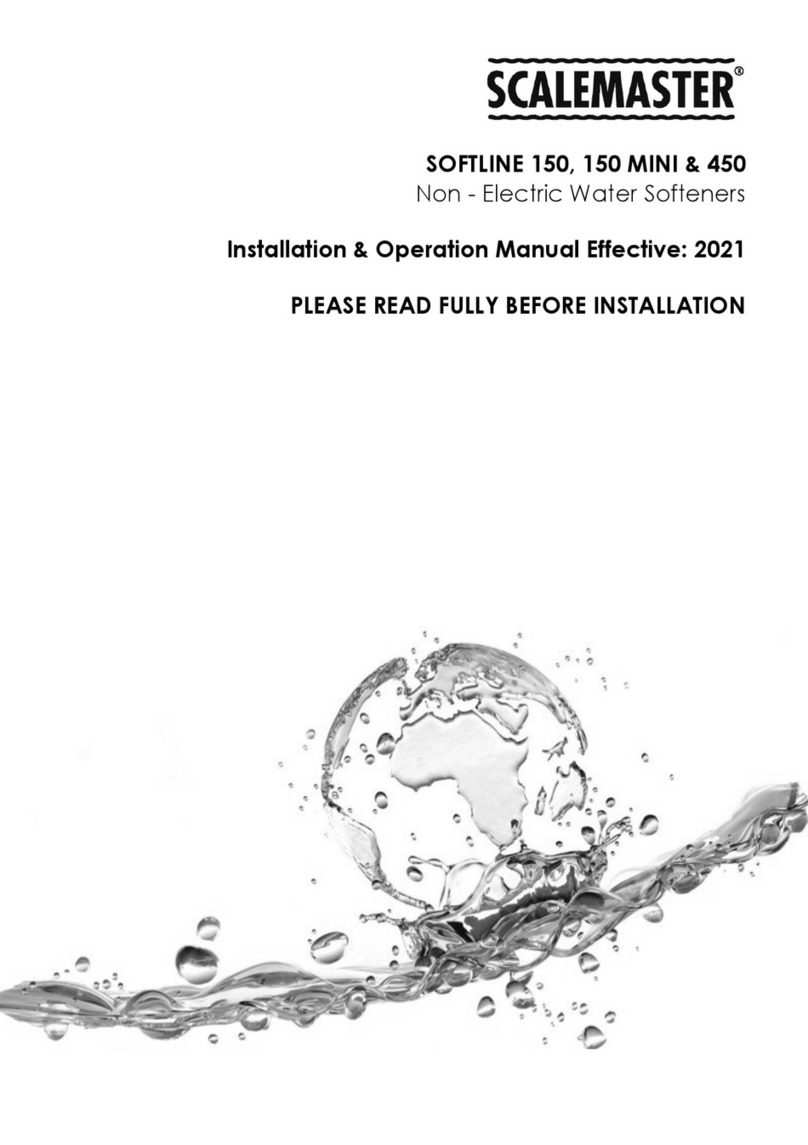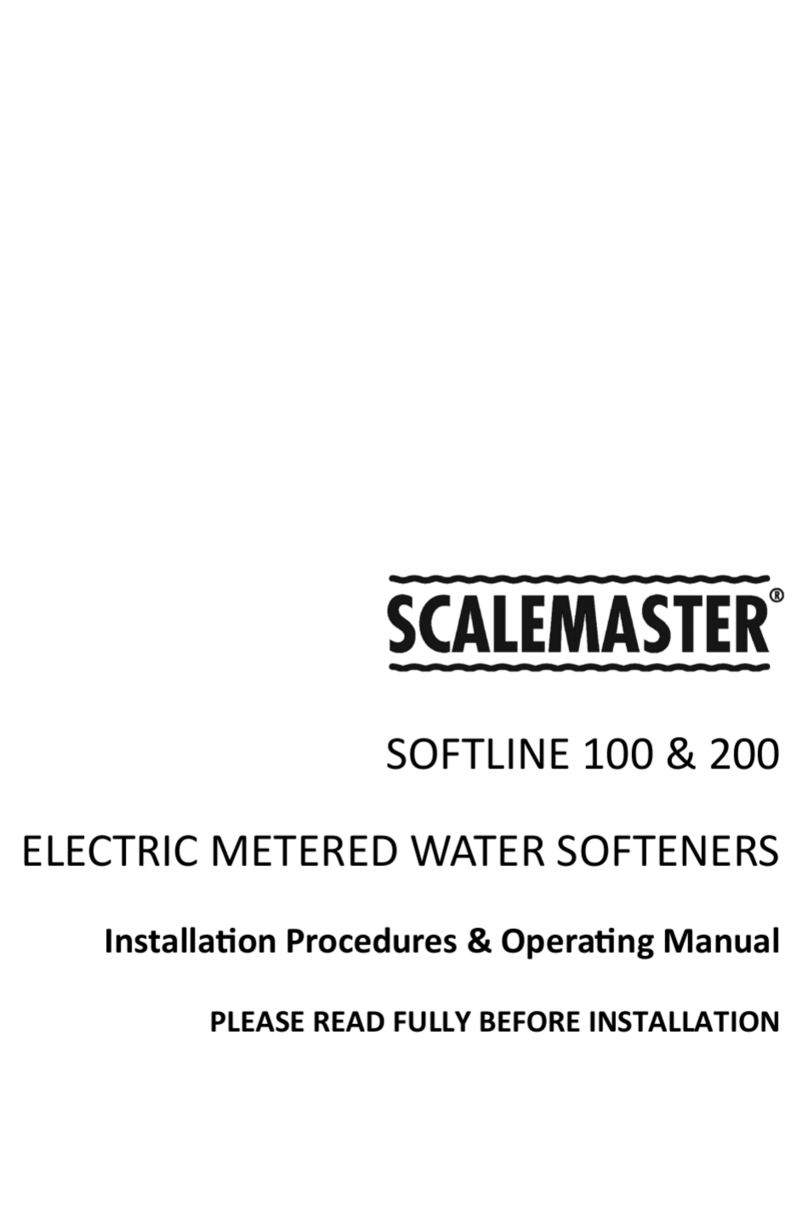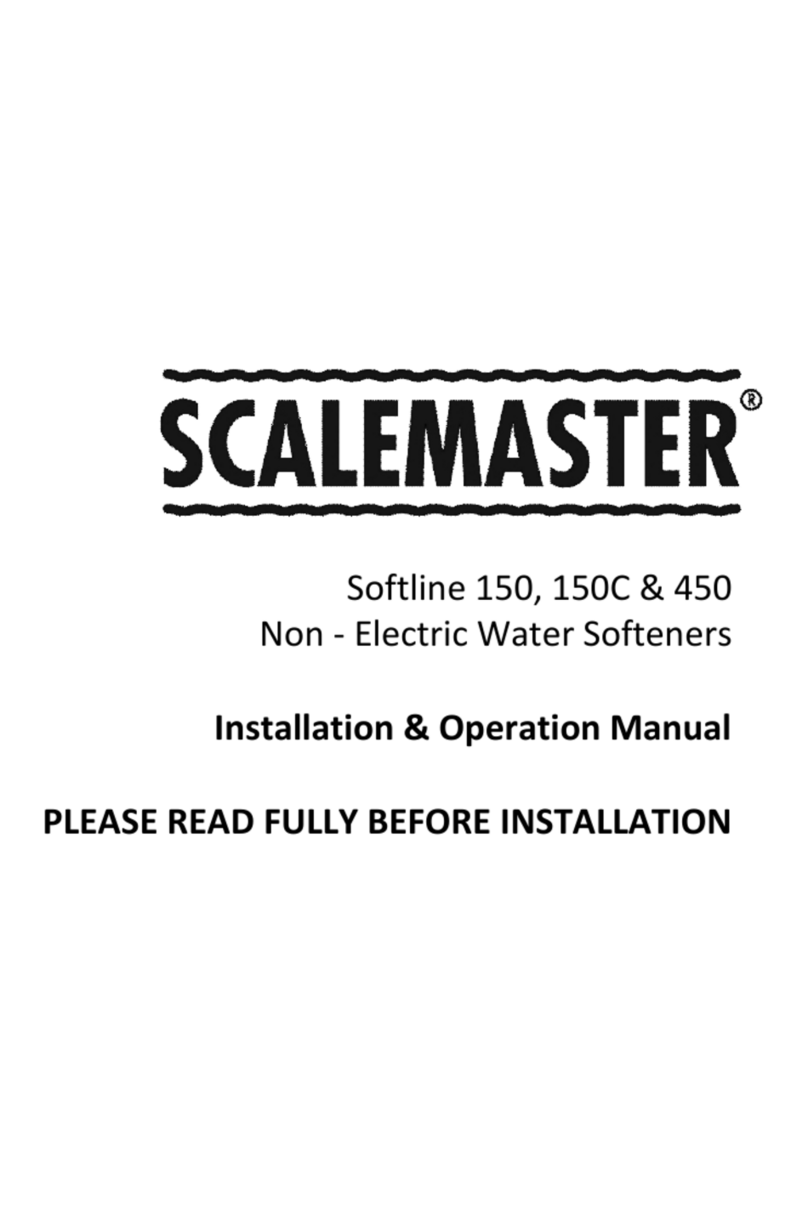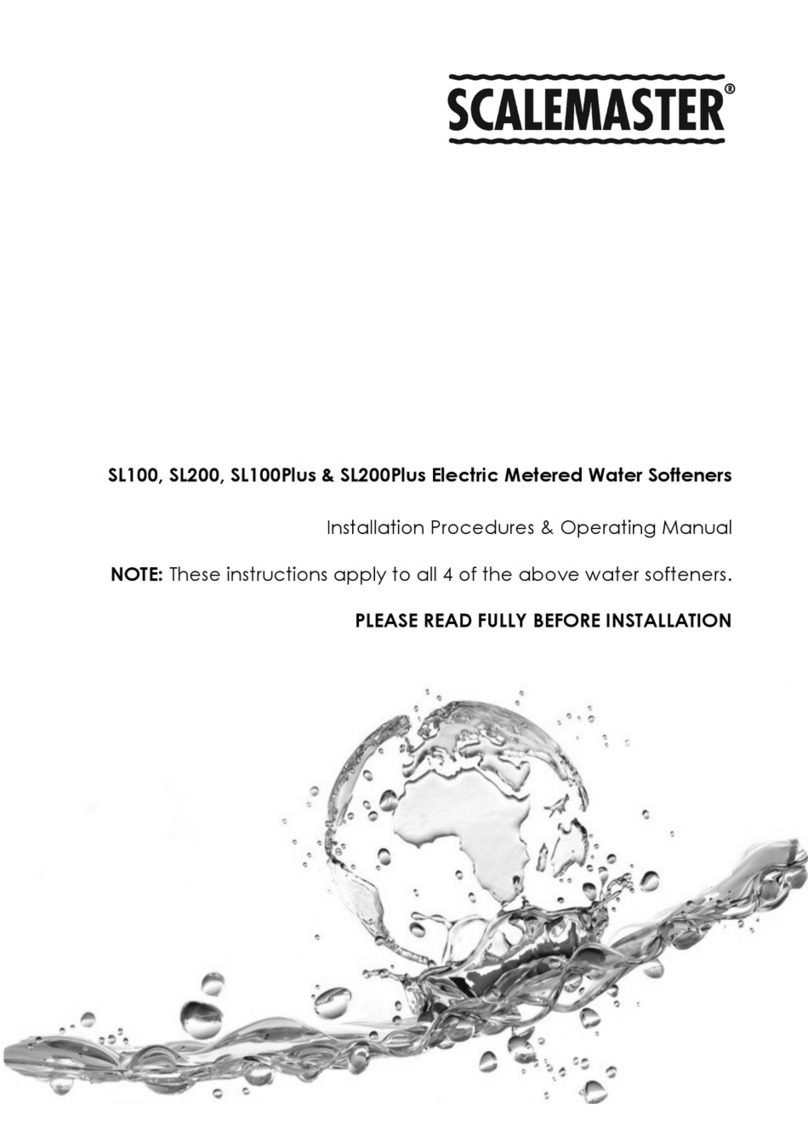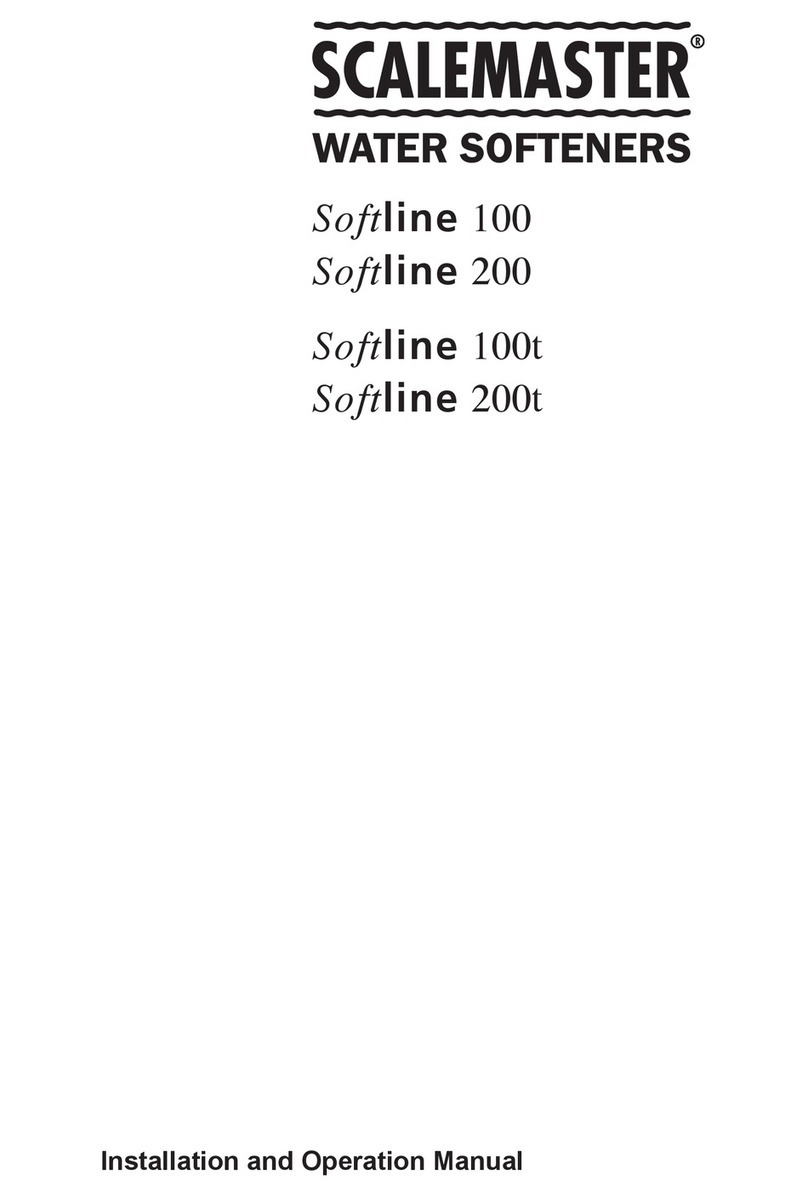Positioning the water softener
• Remember to measure your water softener and the space where it will be installed.
• Remember to allow extra space for connecting pipework when you do your
calculations along with adequate space to allow for future servicing, maintenance
and topping up of salt.
• Where possible the softener should be placed close to the rising main.
• Keep the distance of the incoming main and drainage to a minimum.
• The weight of the water softener is greatly increased when fully operational and filled
with both salt and water so this must be taken into account when choosing where to
site the water softener.
• If putting the softener in a cupboard ensure that the base is adequately supported.
• It is important to carry out a pressure test. High and low water pressure can result in
either damage to or failure of the softener. Your water softener is designed to operate
effectively with an incoming water pressure of between 1.4 bar (20psi) and 5 bar
(70psi). If your water supply is likely to fall outside of these parameters we recommend
that either a booster pump or pressure reducing valve should be fitted accordingly.
• Do not install your water softener next to a boiler or other heat source that will exceed
ambient temperature of 40°c.
• If positioning outside, the softener and any pipework must be protected against frost
and freezing.
IF YOU ARE CONSIDERING INSTALLING YOUR WATER SOFTENER IN A LOFT, THE FOLLOWING
INSTRUCTIONS MUST BE STRICTLY ADHERED TO.
Loft Installation
• The water softener may be installed in a loft or roof cavity but must be situated within a
safety tank of not less than 100 litre capacity. A suitable tank would be a plastic roof
storage tank with an overflow pipe of not less than 20mm diameter. This tank should be
mounted on a board strong enough to spread the weight over a load bearing wall.
The overflow on the tank must be below the softener overflow and be a minimum of
3/4” in size.
Drinking Water
• When fitting your water softener allowance should be made for at least one drinking
water tap that is not fed by the water softener. Where practical this should be at the
kitchen sink but a utility room or other suitable alternative will suffice.
• It is recommended that people on a low sodium diet should not drink artificially
softened water. Water used for mixing infant powder for babies must only be taken
from unsoftened water as artificially softened water contains an increased level of
sodium to which young babies have a limited tolerance.






